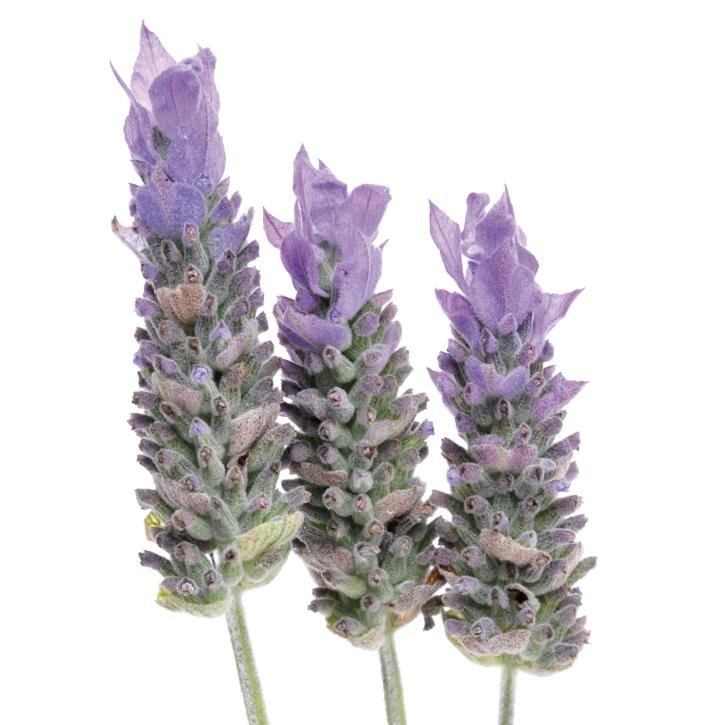Bush of 30 to
It grows in Europe and
Flowering tops.
Internal use
External use
Buchbauer G, Jirovetz L, Jager W, Dietrich H y Plank C. Aromatherapy: evidence for sedative effects of the essential oil of lavender after inhalation. Z Naturforsch [C]. 1991;46(11-12):1067-72.
Cavanagh HM y Wilkinson JM. Biological activities of lavender essential oil. Phytother Res. 2002;16(4):301-8.
Elhajili M, Baddouri K, Elkabbaj S, Meiouat F y Settaf A. Diuretic activity of the infusion of flowers from Lavandula officinalis. Reprod Nutr Dev. 2001;41(5):393-9.
Guillemain J, Rousseau A, Delaveau P. Neurodepressive effects of the essential oil of Lavandula angustifolia Mill. Ann Pharm Fr. 1989;47(6):337-43.
Hajhashemi V, Ghannadi A y Sharif B. Anti-inflammatory and analgesic properties of the leaf extracts and essential oil of Lavandula angustifolia Mill. J Ethnopharmacol. 2003;89(1):67-71.
Louis M y Kowalski SD. Use of aromatherapy with hospice patients to decrease pain, anxiety, and depression and to promote an increased sense of well-being. Am J Hosp Palliat Care. 2002;19(6):381-6.
Lis-Balchin M y Hart S. Studies on the mode of action of the essential oil of lavender (Lavandula angustifolia P. Miller). Phytother Res. 1999;13(6):540-2.
Moss M, Cook J, Wesnes K y Duckett P. Aromas of rosemary and lavender essential oils differentially affect cognition and mood in healthy adults. Int J Neurosci. 2003;113(1):15-38.
Motomura N, Sakurai A y Yotsuya Y. Reduction of mental stress with lavender odorant. Percept Mot Skills. 2001;93(3):713-8.
Real Farmacopea Española. Suplemento 2001.
Matière Médicale. RR Paris- H. Moyse. Masson 1981.
Plantas Medicinales. El Dioscórides Renovado. Pio Font Quer.
Guía de Campo de las Flores de Europa. Oleg Polunin. Ediciones Omega S.A. Barcelona, 1977.
Plantas Medicinales. Margarita Fernandez y Ana Nieto. Ed Universidad de Navarra. EUNSA 1982.
Pharmacognosy, Phytochemistry, Medicinal Plants. Jean Bruneton. Lavoisier Publishing.
Plantas Medicinales. Thérapeutique-Toxicité. Christiane Vigneau. Masson, Paris 1985.
Plantes Médicinales des Régions Tempérées. L.Bézanger-Beauquene. Pinkas, Torck, Trotin. Maloine S.A. Editeur Paris 1980.
Plantas medicinales y aromáticas. Estudio, cultivo y procesado. Fernando Muñoz. Ediciones Mundi-Prensa 1993.
